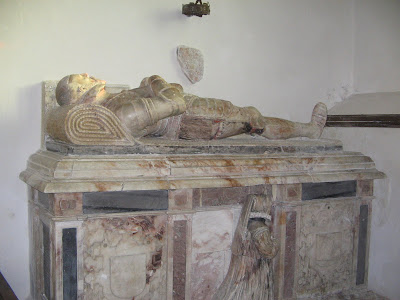St. Agatha's Easby

Until the owner of the house in the foreground cuts down the non-native conifer hedge you wont see this picture again! None-the-less the ruins of St. Agatha’s Abbey, two miles down stream from Richmond , is as atmospheric as it was when Turner painted it in 1816. Parking at the Old Station at Richmond , we crossed onto the north side of the River Swale and followed the track that leaves the road beneath the churchyard. By keeping to the right it follows the river all the way to Easby. During summer months the church is open, when we called in the autumn it was closed. I think it is a good prospect to join the Small Pilgrim Places Network and will approach them as soon as SPPs new website is functioning. In spite of my disappointment in finding the church closed the Priory site, managed by English Heritage, was open and welcoming. I stood in the Priors Chapel, joining my prayers with theirs across the ages, then settled on a comfortable garden seat to have sandwiches and hot soup
















